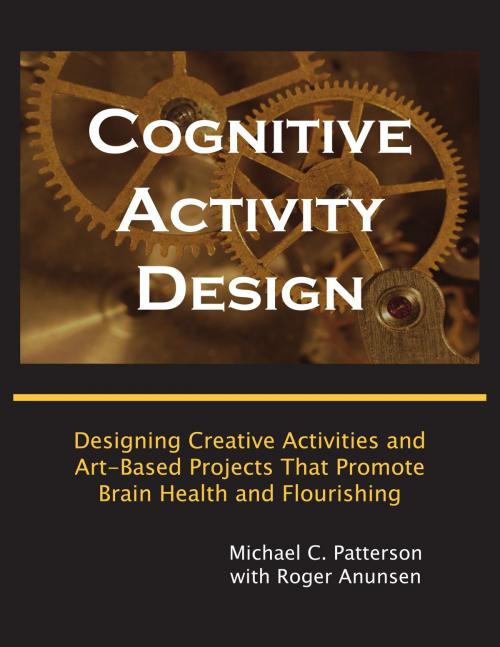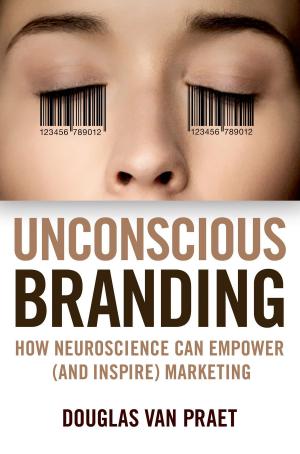Cognitive Activity Design: Designing Creative Activities and Art-Based Projects That Promote Brain Health and Flourishing
Nonfiction, Family & Relationships, Aging, Science & Nature, Science, Biological Sciences| Author: | Roger Anunsen, Michael C. Patterson | ISBN: | 9781310344053 |
| Publisher: | Michael C. Patterson | Publication: | March 24, 2015 |
| Imprint: | Smashwords Edition | Language: | English |
| Author: | Roger Anunsen, Michael C. Patterson |
| ISBN: | 9781310344053 |
| Publisher: | Michael C. Patterson |
| Publication: | March 24, 2015 |
| Imprint: | Smashwords Edition |
| Language: | English |
Learn the principles of Cognitive Activity Design, how to design and implement activities for adults that promote their cognitive wellness.
Cognitive wellness is determined by two key factors. First, cognitive wellness is supported by “brain health,” the health and proper functioning of the brain. Second, cognitive wellness is dependent upon our ability to “flourish,” our capacity to experience pleasure, meaning and purpose in life. We achieve cognitive wellness when our healthy brain uses its cognitive capacity to effectively cope with challenges and to nurture positive mindsets that enhance our ability to experience fulfillment and joy.
You will learn how to design cognitive activities that integrate evidence-based principles drawn from the fields of neuroscience, cognitive aging and positive psychology. You will also read case studies of cognitive activities created by the authors that provide concrete examples of innovative approaches to activity design. Each case study is reverse-engineered to extract key techniques and approaches that result in a design tool-kit you can use when designing your activities. The second section of the book focuses on art-based cognitive activities. We examine the unique characteristics of various art domains and explore how they can promote brain health and flourishing.
Cognitive Activity Design is written for anyone who creates, schedules, supports and leads activities for older adults (and people of any age). It is written for practitioners, administrators and educators. It is also written for anyone who wants to enhance his or her own cognitive wellness.
The basic premise is that any activity (formal or informal) provides an opportunity to combat cognitive decline, mental stagnation and negative emotions. Our brains are remarkably plastic and responsive to environmental stimuli and the people around us. Every purposeful activity with older adults, particularly people living in traditional group settings, can and should be designed to counter cognitive decline. Engaging people in activities that stimulate the growth and resilience of their cognitive functions achieve this goal. Every activity should encourage and promote positive attitudes as well as nurture positive relationships. The book reviews the sciences of brain health and positive psychology and shows how to integrate proven interventions into your activities.
The final section of the book offers a series of articles that explore the scientific and theoretical background for the practical advice offered in first two sections. This section is intended for those of you who want to dig deeper into the science and explore some creative speculation about the nature of art and cognitive wellness.
Learn the principles of Cognitive Activity Design, how to design and implement activities for adults that promote their cognitive wellness.
Cognitive wellness is determined by two key factors. First, cognitive wellness is supported by “brain health,” the health and proper functioning of the brain. Second, cognitive wellness is dependent upon our ability to “flourish,” our capacity to experience pleasure, meaning and purpose in life. We achieve cognitive wellness when our healthy brain uses its cognitive capacity to effectively cope with challenges and to nurture positive mindsets that enhance our ability to experience fulfillment and joy.
You will learn how to design cognitive activities that integrate evidence-based principles drawn from the fields of neuroscience, cognitive aging and positive psychology. You will also read case studies of cognitive activities created by the authors that provide concrete examples of innovative approaches to activity design. Each case study is reverse-engineered to extract key techniques and approaches that result in a design tool-kit you can use when designing your activities. The second section of the book focuses on art-based cognitive activities. We examine the unique characteristics of various art domains and explore how they can promote brain health and flourishing.
Cognitive Activity Design is written for anyone who creates, schedules, supports and leads activities for older adults (and people of any age). It is written for practitioners, administrators and educators. It is also written for anyone who wants to enhance his or her own cognitive wellness.
The basic premise is that any activity (formal or informal) provides an opportunity to combat cognitive decline, mental stagnation and negative emotions. Our brains are remarkably plastic and responsive to environmental stimuli and the people around us. Every purposeful activity with older adults, particularly people living in traditional group settings, can and should be designed to counter cognitive decline. Engaging people in activities that stimulate the growth and resilience of their cognitive functions achieve this goal. Every activity should encourage and promote positive attitudes as well as nurture positive relationships. The book reviews the sciences of brain health and positive psychology and shows how to integrate proven interventions into your activities.
The final section of the book offers a series of articles that explore the scientific and theoretical background for the practical advice offered in first two sections. This section is intended for those of you who want to dig deeper into the science and explore some creative speculation about the nature of art and cognitive wellness.















